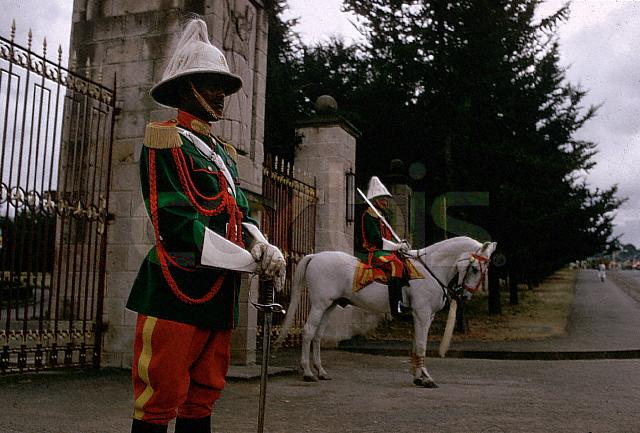 Imperial Ethiopia
Imperial Ethiopia


Quick Links: |
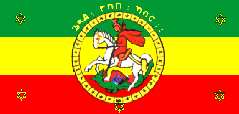
This Page commemorates the Ethiopian Monarchy and the
Imperial House of the Ethiopian Empire. The Solomonic Dynasty of Ethiopia reigned
with few interruptions from it's founding by Menelik I, son of the Biblical
King Solomon and the Queen of Sheba, until the fall of Haile Selassie I in
1974. This page is not directly affiliated with any political or monarchist organization,
nor is it connected to any religious or ethnic group or party. It is meant
simply as a point of interest for those looking for information on the Ethiopian
monarchy. It is not the official webpage of the Imperial Family of Ethiopia or any of it's members.
The Imperial Crest of the House of Solomon The above Crest is the Official Coat of Arms and Seal of the Ethiopian Monarchy, and is displayed on this website with the gracious permission of the Ethiopian Crown Council.  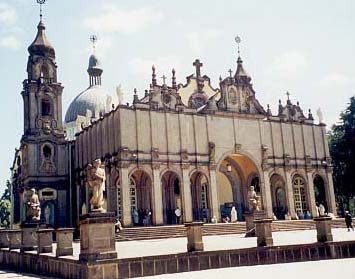 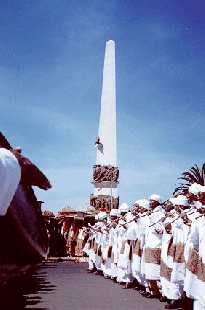 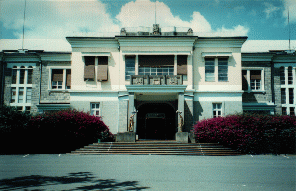 In 1931, Emperor Haile Selassie granted Ethiopia it's first written constitution, and established the first Parliament composed of a House of Deputies and an Imperial Senate. Both Houses of Parliament were appointed by the monarch. In 1955, a new revised constitution was granted. Although it retained the concept of absolute monarchy, it did provide for the first time, for a directly elected House of Deputies. All male and female Ethiopian subjects were eligible to vote, although no provision was made for the allowance of political parties.
Some Early Monarchs of the House of SolomonMenelik I, First Solomonic King of Kings of Ethiopia
Menelik I was the son of Makeda, Queen of Sheba and King Solomon of Israel. He was the founder of
the Solomonic Dynasty in Ethiopia, and is said to be the first monarch to use the title of King of Kings
of Ethiopia. Makeda, according to the Kebre Negest, returned from her biblical visit to Jerusalem pregnant
with Solomon's son, as did one of her servants. (The Zagwe dynasty would later claim to be the descendants
of the servant). When her son was born, she raised him as her heir, and then sent him to meet his father in
Jerusalem when he came of age. After meeting his father, Menelik returned to his homeland. When Menelik returned, Solomon
arranged for a copy of the Ark of the Covenant to be made for him to take with him, and ordered the eldest sons of all
his nobels and priests to go with Menelik. The son of Zadok the High Priest, apparently reluctant to go off to
a strange land with just a copy of the Ark, crept into the temple and exchanged the replica with the real Ark, and
brought the Ark of the Covenant to Ethiopia. It is kept at the Cathedral of St. Mary of Zion to this day, in a special
sanctuary Chapel that only one guardian monk is permitted to enter.
Emperor Ezana (Abraha), First Christian Emperor
Ezana was the son of Emperor Ella Amida. During his fathers reign, two Syrian youths were shipwrecked on the Red Sea Coast
and brought to the Imperial Court. One of them, Adesius, became the trusted cup bearer and food taster for the Emperor, while
the other, Fermentius, became his secretary. Upon the death of the Emperor Ella Amida, the widowed Empress begged the two Syrian
Christians to remain in the country and help her rule until her son came of age. Fermentius remained, and assisted the Empress as
well as becoming the tutor to the young boy Emperor. Fermentius converted Emperor Ezana to Christianity, and when the Emperor came
of age, he replaced his coins that bore an emblem of the sun and moon along with his image, with new coins that bore the Holy Cross.
They are the first coins in the world to bear the Christian emblem. Fermentius went to Alexandira to request that the Patriarch of the
See of St. Mark, who at the time was St. Athnathius himself, to appoint the first Bishop of Ethiopia. Patriarch Athnathius sent Fermentius
himself back as the first Bishop, with the new name of Abune Selamma. This bishop is known to the west as St. Fermentius of the Ethiopians. Ever since this event in the fourth century, Ethiopia has been
identified as a Christian state in Africa, and one of the oldest Christian states in the world. Ethiopian tradition maintains that Ezana's brother Shezana also served as a co-ruler with his brother, and the brothers are known in Ethiopia commonly as Abraha and Atsbeha. The brothers recieved a letter from the Byzantine Emperor Constantius that instructed them to expell the bishop Abune Salamma as he did not subscribe to the Arian doctrine supported by the Byzantine Emperor, and was a supporter of St. Athenathius, Patriarch of Alexandria who was the leading opponent of Arianism. The Ethiopian monarchs refused, and heald fast to the Orthodox doctrine supported by St. Athnathius. Ezana was a significantly successful
soldier, whose military victories are recorded in numerous inscriptions at Axum. He is also credited with having brought the Ark of the Covenant from the island of Tana Kirkos in lake Tana, to the Cathedral of St. Mary of Zion which he built, removing it from the custody of the Bete Israel Jews (Falashas) and placing it in the hands of Ethiopia's Christians.
Emperor and Saint Gebre Meskel
During the reign of this monarch, St. Yared developed and composed the liturgical music and chants of the Ethiopian Orthodox Church, as well as a unique 5 note system and notation system for Ethiopian music. Emperor Gebre Meskel is said to have been so mesmerized by Yared's music, that he accidentally pierced St. Yared's food with his spear while listening to a recital by Yared. Gebre Meskel was a particularly pious Emperor who was himself eventually declared a saint of the Ethiopian Church.
Emperor Kaleb the Great
Emperor Armah,Welcomer of first Muslims
The Emperor Armah is the Ethiopian monarch who was the first ruler to give sanctuary to the first
Muslims. Soon after the Prophet Mohammed began his teaching in Arabia, the Kings of the region began
to ruthlessly suppress and persecute his followers. Many fled across the Red Sea to the Axumite
Empire, including members of the Prophet's family. When the pagan Arab kings heard that many Moslem refugees
had fled to Ethiopia, they sent messengers to Armah offering a large bounty for the return of these
fugitives to them. The Axumite Emperor, hesitant and unsure of the nature of these exiles had them investigated by his officials,
and was told that they were simple people who believed in one God, and were mostly poor women and children
who had thrown themselves at his mercy. After seeing this for himself, he is said to have replied to the
Arab Kings, "Even if you were to pay me a mountain of gold, I could not in good conscience betray these
people and send them to you." This act was possibly a key event in the survival of the young Islamic religion, and
the Prophet deeply appreciated this act of compassion. He explicitly instructed his followers to leave the
Ethiopians in peace, and exempted Ethiopia from Jihad. This in turn allowed Ethiopian Christianity to survive
intact as the Nubian Christian kingdoms and the Christians in Egypt succumbed to eventual Muslim conquest. When news that Emperor
Armah had died reached the Prophet Mohammed in Mecca, it is said that he wept and mourned for him. Muslims and Christians have lived
side by side in Ethiopia ever since. Relations have not always been smooth, but there has been very little deep
seated hatred or religious atrocity outside of the Gragn era and it's aftermath. Muslims refer to Armah as Najashi (a variation of Negasi or Nigus, which means King).
Emperor Anbassa Widim and the Fall of the Axumite EmpireA Brief history of each of the preceding monarchs is being worked on. During the long
reign of Anbassa Widim, a Jewish (Falasha or Bete Israel) woman named Yodit led an uprising that swept
much of the land and fought to eliminate Christian hegemony and regain custody of the
Ark of the Covenant for the Ethiopian Jews. Upon the death of Yodit, Anbassa Widim was restored breifly, but
following his death, the weakened dynasty fell, and were replaced by the Zagwe dynasty
The Zagwe DynastyFollowing the fall of the Solomonic Dynasty, the throne was assumed by a new royal house known as the Zagwe Dynasty, founded by Emperor Mara Tekle Haimanot. These Emperors were said to have been of Agew origin, and the name Zagwe is believed to be derived from the words Ze Agew (which means "of Agew"). Although what is known as Agew Midir (land of the Agews) is located in modern day Gojjam, the Agew are known to have occupied a much wider area in earlier times, and been a major ethnic group in the Empire. Over the centuries, they have assimilated more and more into the Amhara ethnicity which surrounded them and are now indistinguishable for the most part, except for the very few remaining Agew who still speak their distinct language. The new dynasty from it's origins had difficulties with establishing it's legitimacy. It is said to have claimed decent from King Solomon through the maid servant of the Queen of Sheba who according to the Kibre Negest was also impregnated by the Israelite king at the same time. They also claimed an even older lineage by claiming decent from Moses through his Ethiopian wife. None the less, they seem to have always suffered from a perception of a lack of legitimacy, especially since the Solomonic descendants of the Axumite Emperors continued in existence in Shewa. The Zagwe's moved the capital of the Empire from Axum to the south, into the district of Lasta, to a town called Roha. This town would be renamed for the greatest of the Zagwe Emperors, Lalibella, who would build the great rock hewn churches that are still in use today as places of worship and pilgrimage. Below is a list of the Zagwe Emperors, and the dates of their reigns. Several of them would later be canonized by the Coptic and Ethiopian Orthodox Churches.
The Solomonic Dynasty was restored in 1270 when the founding Abbot of Debre Libanos Monastery, Saint Tekle Haimanot, convinced Harbe II to step aside and allow the Solomonic heir, Yekonu Amlak, to assume the Imperial Throne rather than face a humiliating military defeat. Legend states that Harbe II took religious vows and became a monk, and his heir was the one who received the settlement from the new Emperor and became the first Wagshum, with the district of Wag as his hereditary fief. The descendants of the Zagwe Emperors bore the title of Wagshum from the year 1270 right up to the revolution of 1974. The Abdication Settlement not only granted the district of Wag and the hereditary title of Wagshum, but also granted the Wagshums the right to be seated on a silver throne one step bellow the golden throne of the Emperor. They were entitled to have the great negarit drum beaten for them in salute on great occasions, and also during military campaigns just like the Emperor. They were also granted the privilege of being seated in the Imperial presence, so long as the Emperor was also seated. They were treated with princely deference by all, and deeply revered in Lasta and Wag. The Solomonic Emperors honored this agreement until the fall of the Ethiopian monarchy 804 years later. Saint & Emperor Lalibela of the Zagwe Dynasty Some Medeival EmperorsUpon the death of Yekonu Amlak, he was succeeded by his son Yigba Tsion who speant much of his reign fighting various sons and grandsons of Yekonu Amlak for the succession. After a brief reign that ended with his death in 1294, the fighting intensified among his brothers and nephews untill 1300 or so when it was decided to return to the old custom of imprisoning all male heirs of the House of Solomon to prevent wars of succession. Instead of the old royal prison on Debre Damo monastery, they royal men were taken to the new monastery prison built on Amba Gishen. Amde Tsion was crowned in 1313 and brought all the Christian distrincts of the northern highlands under his firm control. He expanded his power deeper into Shewa, Gojjam, Damot and Agew Midir. He established stronger control of the Lake Tana area, establishing a strong base on the Zegey penninsula where he built the beautiful St. Mary's church which still stands today with it's magnificent murals. He also expanded deep into the south into Hadiya, which is in modern Sidama (Sidamo), and spread Christianity throughout the south. He strengthened the monarchy and established a more stable system of government. Emperor Amde Tsion died in 1344.
During the reign of Emperor Tekle Giorgis I, in an attempt at consolidating declining Imperial power, the Emperor proclamed the imposition of new taxes on the population of Beghemidir, (in particular a tax on honey produced) the Province in which the capital, Gondar, was located. The nobles of the province appealed to the Emperor, stating that they had long been exempt from such taxes. He refused to accomidate them. The "Enderase" was a noble who was appointed
to serve as a type of Grand Vizier or PrimeMinister. At this time, it was the Yejju Oromo nobleman, Ras Gugsa the Great. The nobles assembled at Debre Tabor, and summoned him to them. They told him that they no longer wanted to be ruled by the Emperor, and if he stood with them, and agreed to act only in consultation with them, he could assume power and relegate the
monarch to a powerless symbolic role confined to the Castle compound in Gondar. The Enderase swiftly agreed. Emperor Tekle Giorgis I was informed that he was to refrain from participating in affairs of state, and symply reign from his thone as the supreme source of legitimacy, and a symbol of sovreignity, but devoid of all power. Stripped of all their traditional power, the Emperors became mere puppets of whomever could assume the Enderaseship. The people contemptuously refered
to the successive monarchs as Our Ladies the Castle Keepers (Woizazir Ye Gimb Tebakioch). The loss of Imperial prestiege
had begun with the murder of Eyasu the Great by his son Tekle Haimanot I, but probably the greatest blow to Imperial power was the
killing of Emperor Eyoas I on the orders of the Enderase, Ras Michael Sihul. The emasculating of Tekle Giorgis I's power was simply the final straw. The Emperors struggled to maintain their role,
but Tekle Giorgis I was the last of the elder Gondar branch of the Imperial dynasty to excersize any real authority. The era that
followed was the Zemene Mesafint (Era of the Princes) in which regional leaders governed with little oversight from the capital.
They fought each other for power and territory, and struggled to sieze the position of Enderase for themselves. Athough others did manage to sieze the Enderaseship from time to time, it was usually held by members of Ras Gugsa the Great's family, a noble family of Oromo origin from Yejju and Wollo. Each Enderase would choose a
prince of the Imperial House and place him on the throne as his puppet, but when another Enderase siezed power, or the incumbent monarch displeased the Enderase, the puppet Emperor
would be replaced by another. Some monarchs would be deposed and restored several times in their lifetimes. Although they held the strings of power and authority the House of Yejju never presumed to seize the throne for themselves, always aknowledging the right of the House of Solomon to occupy the Imperial throne even if only symbolically. Often refered to by foriegnors as princes, the Yejju rulers of Ethiopia were in fact nobles and not princes. The following is a list of
the monarchs of this era who had no power, but were legitimate monarchs in whose names the nation was ruled by its many warlords. Many were contemporaries of each other, and found themselves switched on and off the throne at the whim of the Enderase. They followed Emperor Tekle Giorgis I.
With the deposing of Emperor Yohannis III in 1851 by Kassa of Kwara, who usurped the throne as Tewodros II, the elder line of the Solomonic Dynasty, the Gondar Branch, came came to an end. Emperor Yohannis III was deposed and expelled from the Palace compound in Gondar and went to live in another house in the city. He apparently fell on hard times, and would write a pitiful letter to Emperor Napoleon III of France, pleading for funds because he had become destitute. There are stories that he converted to Catholicism. Following Tewodros II's death, three branches of the dynasty, the Tigrai Branch, the Gojjam Branch, and the Shewa Branch became the leading representatives of the House of Solomon. They were challenged by Wagshum Gobeze who set forth claims as both the Zagwe heir, and also by virtue of Solomonic blood on his mother's side. Emperor Yohannis IV was the only member of the Tigrai Branch to reign, but his decendants were recognized as the hereditary princes of Tigrai. The Shewan Branch eventually became the reigning branch of the family, and recognized as the senior one of the three lines. The head of the Gojjam Branch became King Tekle Haimanot of Gojjam, and his decendents ruled Gojjam as it's princes for many decades afterwards. The family trees are extensive. THE MODERN ERA ETHIOPIAN MONARCHY
Magdalla Loot AffairsEmperor Tekle Giorgis II (Uncrowned)
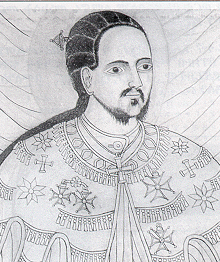
 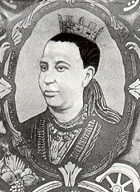


 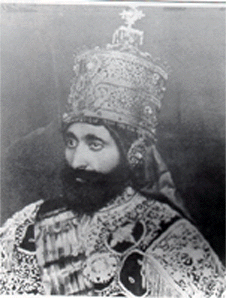

The Imperial Dynasty of Ethiopia, the oldest Royal House in the world,(along with the Imperial Dynasty of Japan), continues in existence. No abdication was ever signed by Emperor Haile Selassie, nor was any abdication decree issued by him or any of his heirs. Thus in a strictly legitimist view, there are those who support the legal argument that the monarchy has never ended. In practice however, Ethiopia is administered as a Federal Republic by a government that gives no recognition to any Imperial claimants, and treats members of the Imperial Family as private citizens. Many members of the Imperial Family have returned and settled in Ethiopia in the years since the fall of the Dergue, and particularly in the time since the reburial of Emperor Haile Selassie in November 2000.
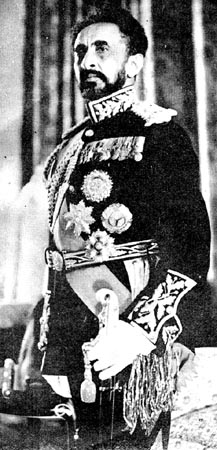
The Funeral of the Emperor Haile Selassie 
|



